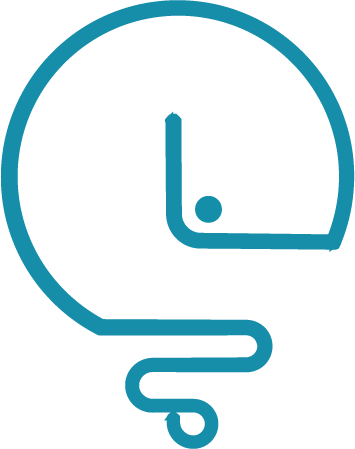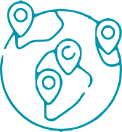Research & Development
Implementing innovative research and development platform for fueling your growing business.
What is this service?
According to UNESCO, global spending on R&D has reached a record high of almost US$ 1.7 trillion in 2017 that is forecast to grow by 3.6 percent in 2019 to a total of $2.3 trillion according to the 2019 Global R&D Funding Forecast report. Among more than 200 countries and territories almost 10 countries account for 80% of spending. As part of the Sustainable Development Goals, countries have pledged to substantially increase public and private R&D spending as well as the number of researchers by 2030. This growing trend is reasonably
influenced by the accelerating impact of the enticing high average return on public investment in R&D, which has been about 20% over the preceding decade—far higher than that on stock (6.8%), bond (3.1%), or other asset classes.
Our goal is to be an environment for knowledge creation that creates attention in the academic community as well as among decision-makers in organizations. We escort our clients towards a creative R&D platform. We help you design an advanced R&D vision and establish a R&D mindset for long-term growth.
Our R & D services cover
Structuring
As symbols of the Nation’s technological progress, research facilities are essential to the discoveries and breakthroughs of yesterday, today, and tomorrow. We categorize animal research facilities and research laboratories (wet & dry labs; academic, corporate, and government labs). Many existing research facilities are at an age when renovations/restructuring are needed to support the state-of-the-art research required to be at the cutting edge of science and technology. We help public and private clients to implement emerging model of laboratory design and to create research laboratories that are responsive to current and future needs, that encourage interaction among scientists from various disciplines, that help recruit and retain qualified scientists, and that facilitates partnerships and development. We consider future trends of scientific workplace in our services for structuring research facilities.
_________________
Services for structuring research facilities
Building attributes
-
- Architectural consideration (lab planning module, lab planning concept, flexibility, systems distribution concepts)
- Engineering considerations (structural systems, mechanical systems, electrical systems, piping systems)
- Operations and maintenance
- Lab and personnel safety and security
- Sustainability considerations
Laboratory equipment
-
- Selection, adoption and integration of scientific equipment, lab informatics management systems, quality management systems, ELN, LIMS, SDM, and PLM management systems
Redefining the way researchers and labs operate
-
- Laboratory management practices (regular team meetings, shared ownership and decision-making, supervision and guidance, scrutinize data and findings, establish and follow SOPs, set up values and expectations)
- Governance charter
- Supervision guideline (recommendations and good practice for R&D departments, universities, and doctoral supervisors)
Training
If you are looking to develop the capacity of your institution, then it is important to recognize that researchers will need training at all levels, from postgraduate to early career researchers, to those aspiring to leadership. We offer bespoke ‘Train the Trainer’ programs for researcher developers at any career stage from short courses of up to two days to large-scale, multi-format training.
People are the most valuable assets in any lab. We offer comprehensive, professional training through a complete course portfolio that can help you achieve the most from your instrumentation and results.
Would you like to focus training on your specific application? Do you need to train multiple users? Would you like to receive a training course directly in your lab to avoid travel expenses and to be trained on your exact configuration? Contact us and we will find the right solution for your needs. We will:
design a training agenda with you
schedule the training course for you
_________________
Training services
Application and instrument training. Get hands-on lab experience and further your working knowledge of applications and instrument operation. As experts in their disciplines, our experienced specialists can provide a variety of education solutions to ensure thorough understanding of the technique, experiment setup, and data analysis.
Effective communication. Workshop training focused to improve the communication skill according to the different needs in your institution and with the aim of achieving and efficient workflow in all working processes.
Leadership and team management. Workshop training focused for the heads of R&D units and research groups about how to deal with the challenging situations derived from leading a team of people towards successful results. The content of the course include: fulfill your leadership role, build a productive and inspiring group culture, deal with conflicts constructively, delegate tasks more effectively, build and sustain the motivation of your group.
Developing and executing an effective research plan. Aimed at training principle investigators on practical approaches to successful implementation of practice-based research. Choice of the scope, literature search, design of the research plan, work packages, and tasks, timeline to help guide the execution of the research project plan, and financial support are among actions taught communicated.
Scientific supervision/mentoring leveraged. Supervision is an important part of graduate education and the completion of the degree (Engineering, Master, PhD) and students are entitled to high-quality expert supervision. This workshop training provides recommendations for the support and advancement of good scientific supervision and illustrates them with examples of good practice and supervision plan.
Writing style in English. Workshop training focused and designed for project managers and experienced researchers, aimed at improving style and effectiveness with the written word, with practical applications for research projects applications and scientific papers for journals.
Conference presentations skills training. Workshop training focused to improve competence and confidence in presenting in English at scientific conferences. This skills based workshop combines presentation planning with many opportunities to practice public speaking.
Becoming a scientific writer: Putting ‘Why’ before ‘How’. Workshop training focused to help publishing scientists develop a more impartial, analytical view of their own writing behavior and of their readers’ perception of the finished product. Participants will learn to recognize how basic human psychology can interfere with the transmission of their scientific message through their articles – and also how to use those same psychological processes to promote effective transmission of that message. This training takes an important qualitative step beyond ‘HOW to do scientific writing’, by prompting publishing scientists to ask ‘WHY do I write it like this?’ It will raise scientists’ awareness of what’s going on in their own minds as they write a scientific manuscript, and improve their ability to understand and connect with their readers’ minds. It will get them thinking in a more practical way about the parts of a paper and their purposes, and the dynamics of the writing process – and will link these back to the writer’s and reader’s thought processes, moods and objectives.
Creating
Low reproducibility rates within life science research undermine cumulative knowledge production and contribute to both delays and costs of therapeutic drug development. An analysis of past studies indicates that the total prevalence of irreproducible preclinical research exceeds 50%. This raises the question: How is it then possible to develop research projects that are worth funding? Especially considering the high responsibility towards sponsors, tax payers or donators. R&D is today the solution to technological challenges, product development and design, process refinement, business growth, and to excellence in education. Working with us can increase your confidence to create, implement and monitor research projects tailored to your need. We escort private and public R&D units/departments in this challenging journey.
_________________
Services for creating R&D actions
-
- Developing university-industry joint research project proposals (national and transnational)
- Design and supervision of Master thesis and PhD research projects for the industry
- Monitoring university-industry joint research projects
- Assistance in the preparation of transnational research proposals
- Assistance to European clients in identifying local partners and stakeholders for implementing transnational projects
Connecting
Finding the best contract research organization for your project can be tedious work. INODEV provides a database of curated research partners who proved to be highly reliable with their research quality.
_________________
How does it work? – An example of a conceivable connecting project
A major pharma company active in the fields of Immunology and Neuroscience running internally a variety of drug discovery projects – each one of them requiring support of anatomy and histology groups. With all main research facilities of this company, it turned out to be problematic to engage highly experienced and highly qualified internal research staff to do large volumes of routine work (essentially preparing the tissue for histological analysis). An additional challenge is the reluctance of upper management to increase headcount in R&D. Additionally, reducing histology support of the projects, another option to reduce the workload for the department, is fiercely resisted by project leaders. The histology department was clearly regarded as a success critical project bottleneck, when an interesting alternative presented itself. Looking for solutions to eliminate this success-critical project bottleneck, we have identified a lab in Poland that employed people with highly developed histology skills, had at least 50% of their resources unused (due to limited funding) and a high motivation to work. Two people from this lab are sent to the pharma company’s research center for a one-month training program. Upon their return, this lab receives basic tools necessary to conduct the work and the tissue samples to process.
How we do it
In a few words.
Managing R&D projects differ from conventional project management, primarily because by definition, outcomes are less certain and therefore so are time scales and plans. However the discipline formal project management puts in place, can help control and coordinate R&D project activities and so reduce the risks around it. Accordingly, we consider the following considerations when implementing an appropriate plan/process.
R&D project objectives
should be set, along with a budget and any known timescales and milestone targets. Plan in project reviews and start identifying the key questions which will be used to scrutinize progress. As a minimum, prepare questions on cost, quality and lead-times, together with queries about outcomes, collaborations, resources used and the next set of actions, based on tangible deliverables.
Other aspects
We also consider other aspects of managing R&D such as the organization size (small business, large manufacturing company, small/large research infrastructure), the criteria of decision to rank, start and stop R&D projects, the periodic review of R&D assets to help your business make the decision to stop some activities, R&D documentation (reports, logbooks, publications, and other forms of reporting).





